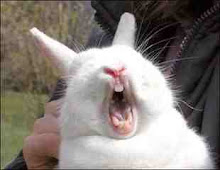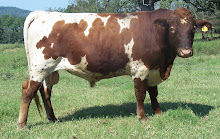At first, to talk about eating a “rare” breed of anything sounds counterintuitive. After all, if there are only a few of something, then every single one of them needs to be preserved, right?
Not exactly.
One of the key things we need to understand is the difference between conservation of exotic species, and domestic breeds.
Exotic species are the animals we see on the National Geographic, or in your local zoo, or sometimes, just as a footnote in a history book. Think the Dodo. These animals exist on their own merit, changing in response to environmental pressure, with no intentional selection by humans. Zoos do seek to manage captive populations to minimize the effects of inbreeding and to insure pure species in the event that they ever would be released into the wild, but there is no intent to shape the phenotype of the animal.
Domestics, on the other hand, exist purely in relationship to human civilization. When the first species were domesticated 10,000 years ago, it represented a huge shift in the evolution of both the animals and the humans. In fact, evolution has been defined as the gene’s desire to reproduce and pass it’s qualities down to subsequent generations and ensure its survival. The animals, in a sense, “traded” their freedom for the security of domestication and the opportunity to ensure the survival of their genes. Humans “traded” the work and risk involved in caring for the animals in return for milk, meat, draft power and a hundred other benefits the animals provide.
There are a little over a dozen species of domestic animals worldwide. These species have given rise over the millennia to thousands of breeds of livestock, each uniquely adapted to an environmental, cultural, or job related niche.
It is these unique breeds that those interested in conservation of rare livestock find them selves engaged with.
Rare livestock breeds find themselves rare for a variety of reasons. One of the most obvious is the trend towards modern agricultural production, which favors one or two breeds at the expense of the others. In fact, most modern confinement livestock operations do not even use pure breeds of anything, favoring instead crosses derived to produce the most output of product, with little regard to any other qualities. These crosses are also sometimes closely guarded corporate secrets.
Many of these production systems are also very high input, requiring huge amounts of feed, power and water, and producing large amounts of waste as well.
Another reason many livestock breeds find themselves in a precarious position is a human population that has turned largely entirely from its agricultural roots. 60 years ago, a large portion of the population lived on a farm, or in a small town, and bought their groceries from the local retailer that they had likely known for most of their lives. These days, our food comes from the Ultra-Mega-Mart grocery chains, where you can pick up a loaf of bread and get your tires rotated while you wait. We’ve lost the connection with where our food really comes from and what it takes to produce it.
So, many otherwise productive breeds of livestock find them selves out of a job, because they did not fit the industrial model food system it takes to feed our growing population. And if these breeds don’t have jobs, there is little reason for them to exist at all.
Which is a crying shame.
These breeds have the ability to be productive on forage based systems and do not rely on the heavy inputs required by the industrial model.
Fortunately, there have been small groups of dedicated folks who kept these breeds because they liked them, they were what grandpa raised, or because they were too contrary to go with the flow. Small populations exist, and with careful management in the hands of dedicated conservation breeders, they are making a small comeback.
Now, here comes the counterintuitive part.
How do you conserve something by eating it?
Not every rare breed animal, no matter how critical the population, needs to put its genes back into the gene pool.
Livestock breeding is based on herd management, where often one male will service several females. As a result, there is a surplus of males. Sorry guys, it’s just a math thing. Breeders will chose the best male for a herd sire, one that has the qualities they seek and fits as closely to the established breed standard as possible. The rest of the males, that don’t quite measure up? That’s where the dinner table comes in. It does no breed population, no matter how rare, a service to put animals of mediocre quality into the gene pool. A male gets more opportunity to have his genes represented, and they need to be the best. Females are held to a high standard also, but they get a more limited opportunity to pass on their genetics, and therefore will have a smaller effect on the population.
Now, if no one wants to eat those surplus animals? Remember, having a “job” is part of the trade off for domestication. Well, the breeder has little incentive to keep breeding; after all he can only eat so much himself. If he doesn’t breed, then eventually the breeding stock dies off, becomes unbreedable, and basically ceases to exist.
And that’s how breeds become extinct. By not having a job. Whether it’s meat, fur, milk, or draft power these breeds exist side by side with humans in a symbiotic relationship. One would not survive or thrive without the other.
So, next time you have an opportunity to consume a rare breed, eat heartily and think of it as keeping them in work, and in existence. The rare breeds will thank you for it.
-Callene Rapp
Monday, June 15, 2009
Subscribe to:
Post Comments (Atom)
.jpg)



Really enjoyed this article. It helped me clarify my own feelings about and relationship to my heirloom chickens and future rabbits. Thank you.
ReplyDeleteI'm glad you enjoyed it.
ReplyDelete